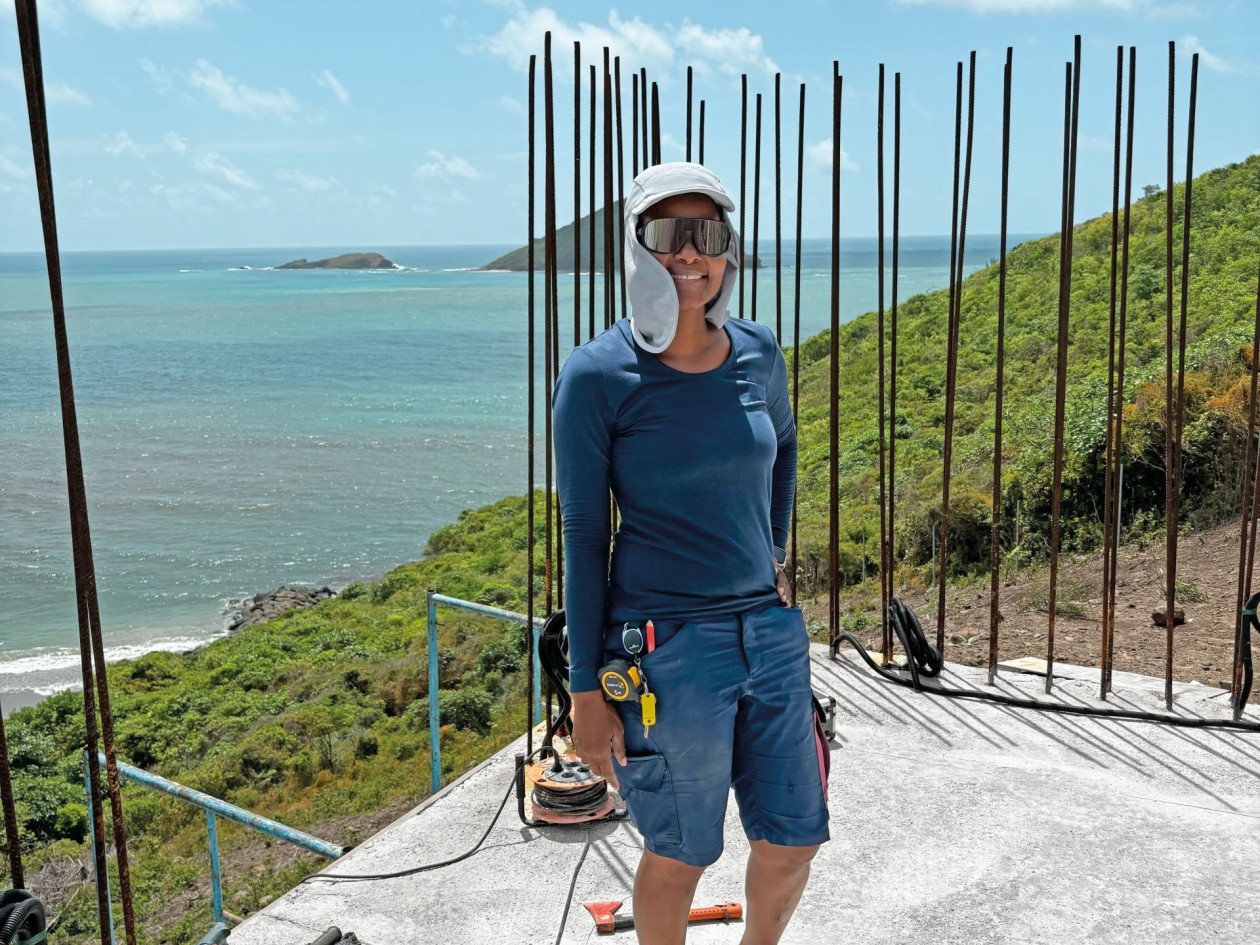Select your region:
Nothing beats doing it yourself
Caribbean islands evoke images of turquoise waters, sun-drenched beaches and picturesque landscapes. But for Dr. Jeanne-Rose René, engineer and managing director of a consulting firm for water resource management, the Caribbean is much more than a holiday destination – it is both home and inspiration.
Jeanne-Rose René “simply made a start” on building herself a house on St. Lucia
Caribbean islands evoke images of turquoise waters, sun-drenched beaches and picturesque landscapes. But for Dr. Jeanne-Rose René, engineer and managing director of a consulting firm for water resource management, the Caribbean is much more than a holiday destination – it is both home and inspiration. An expert in applied hydrology and flood forecasting, she lives and works in the Bavarian town of Kempten and travels across all continents to support authorities and organisations, and to moderate expert presentations. Yet, for a project close to her heart – construction of a self-designed dream house in St Lucia, where she was born and grew up – she took on an extraordinary challenge. “I actually had no intention of building the house myself at first. But it was difficult to find a really reliable and qualified contractor who also had time. So I decided not only to design the home of my choice, but to roll up my sleeves and build it myself,” says Jeanne-Rose René.

Laying aside clients’ concepts and calculations, she swapped her laptop, desk and conference rooms for a hammer, saw and laser distance meter and set off for St. Lucia to work on her own construction site. And this despite having had no previous training as a craftsperson. “Sadly,” she says. She did have an affinity with the building sector after gaining a bachelor’s degree in civil engineering.
But I lacked the practical knowledge. I had hardly ever held a drill in my hand. So I simply made a start and relied on my logical mindset and systematic, process-oriented approach to work.
Jeanne-Rose René
Through an acquaintance who runs a construction company on St. Lucia, she was able to borrow some MEVA MonoWal formwork. She personally co-ordinated deliveries to the site, though she had insufficient formwork for monolithic concreting in a single cycle. The walls were cast in several cycles and for the slab formwork she was forced to use laminated plywood. The latter was a compromise solution as she had intended to avoid joints and the potential leakage points that resulted.
Casting the walls, on the other hand, ran smoothly. “Using MonoWal was easy from the word go. Whenever I needed technical support, I rang the MEVA team and they promptly answered all my questions and provided me with the necessary visuals. Assembly and dismantling doesn’t require much technical know-how. The instructions fully sufficed. The formwork is lightweight and I was able to manoeuvre and assemble the panels on my own.” The first wall was poured in March 2024 and the structural shell completed in September. The result is more than respectable. “At the same time, some things could have been done better,” notes the ambitious owner in a self-critical assessment of the workmanship.
Inspired by the Italian-French word for beautiful view, Dr. René has christened her house “Belvedere”. With a 111 m² basement and 160 m² ground floor, it is idyllically set on a wooded slope on the Cape Moule-à-Chique hill in the village of Vieux Fort and commands vistas across the bay and sea. Dr. René gave high priority to designing a durable building with a minimum maintenance requirement. The envisaged dream home was to feature aesthetic, minimalist architectural concrete in a warm, light-coloured tone. For this she ordered a consignment of white cement to be delivered from Turkey by ship.

The resulting concrete surface is very bright and handsome, with black particles from the admixtures showing through. I mostly achieved the desired fair-faced finish – except in isolated areas where the formwork joints were not properly closed or the formwork was either insufficiently or over-generously oiled. There was unfortunately no suitable release agent available on the island and obtaining the right materials was a challenge.
Jeanne-Rose René
For the concreting operations, Dr. René needed the help of several workers partly due to the difficulties caused by the terrain. Use of a boom pump was not feasible while a pipeline pump would have wasted too much concrete and not been economical. So the only remaining option was a concrete chute. Around 15 concreting operations were necessary for the realisation of the shell.
At least one worker was always with her on site for safety reasons, e.g. when climbing and to help her carry heavy loads. “Unfortunately, my colleague didn’t have much confidence in me as a woman,” says Dr. René, looking back, “and conflicts sometimes arose. Also because of my single-minded approach – I believe in doing things properly and questioned some of the procedures.” Her overall verdict is nonetheless wholly positive: “I’ve really enjoyed this work throughout. And to know that I’m doing it all for myself has constantly spurred me on.”
The structural shell was complete in six months.In November 2024, some friends from Germany helped to install the windows and doors. The focus now is on the interior fit-out.
MEVA systems:
Subscribe to the MEVA newsletter
MEVA news, worldwide projects and tips & tricks from formwork professionals, digitally and directly to your inbox.





